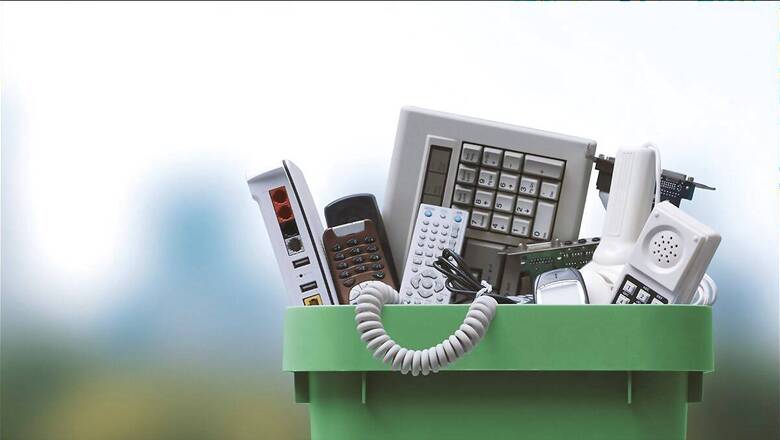
views
In recent years, close to Gandhi Jayanti in 2021, the Prime Minister urged action to tackle the issue of excessive waste in Indian cities and vowed to prevent untreated sewage from entering rivers. Beyond the original goal of ending open defecation in urban areas, the
Swachh Bharat Mission – Urban (SBM-U 2.0) aims to transform Indian cities into garbage-free zones through waste source separation and the application of the 3Rs principles (reduce, reuse, and recycle).
Two significant contributors to the growing waste problem are plastics and electronic waste (E-waste). While plastic waste management has gained attention, particularly after the ban on single-use plastics from July 1, 2022, E-waste regulations have surprisingly received less focus.
E-Waste Management in India
E-waste Management Rules were established in 2016 and amended in March 2018, with updated collection targets under Extended Producer Responsibility (EPR) starting from October 1, 2017. The Ministry of Environment, Forest, and Climate Change (MOEFCC) introduced a draft regulation in 2022 to revise targets and address the E-waste issue.
Despite regulations since 2016-17, India still faces challenges in E-waste management and recycling. Globally, approximately 20% of electronic and electrical waste (E-waste) is formally recycled due to limited capacity. In India, the Central Pollution Control Board (CPCB) reported 1.0 MT of E-waste generated in 2019-20.
As India’s economy grows, electronic consumption will rise, necessitating enhanced E-waste management and recycling capacity. Current targets require businesses to collect and recycle 60% of E-waste by 2023, increasing to 70% and 80% by 2025. However, capacity must keep pace with these targets.
Learning from developed nations
India can draw lessons from developed nations, where E-waste management systems have been in place for decades, achieving recycling rates of around 45-60%. The U.S. recycled only 15% of its E-waste in 2019.
To address this, India needs to reevaluate its E-waste management targets and prioritize capacity building. Fixing targets for two-year intervals, as seen with Bureau of Energy Efficiency (BEE) Energy Label targets, could be beneficial. Moreover, with over 90% of E-waste management in the informal sector, it’s crucial to leverage this network for door-to-door collection and recycling. The focus should shift toward building a sustainable society through education and industry development, rather than solely setting targets.
A suggested approach is to maintain stable targets of 40-50% for 2-3 years, given the increasing volume of E-waste due to rising electronic consumption. The government has previously shown a pragmatic view on target reduction, and it’s hoped that new rules will continue in the same spirit.




















Comments
0 comment